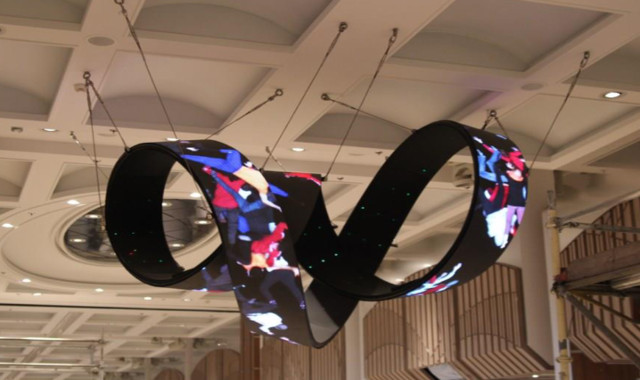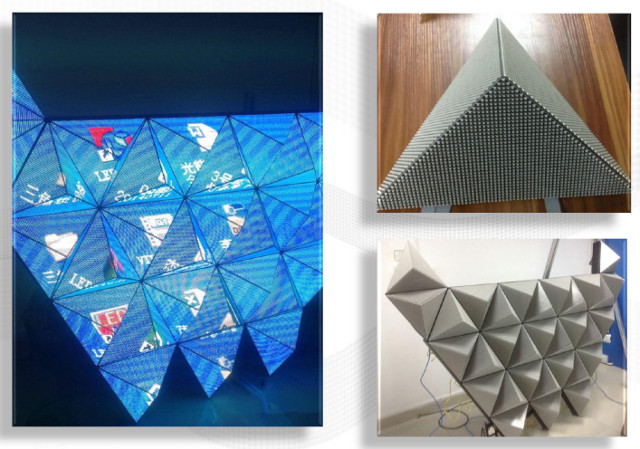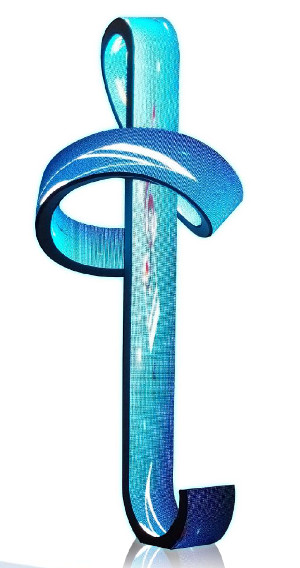An evening meeting hosted by SMPTE and SID was held at Columbia University on February 2nd. Speaking were Gary Mandle of Sony Electronics, Norm Hurst of SRI International and Howard Witherspoon of DesignLED. Below we summarize the presentations of these three excellent speakers.
Sony Provides HDR Overview
Mandle started his talk with a review of High Dynamic Range (HDR) and his focus was on professional mastering with the display solutions that Sony and others offer. There are not a lot of choices – eight monitors, to be specific, from Sony, Canon and Dolby.
He then reviewed OETF, EOTF, OOTF and pointed to the current standards for HLG and PQ-based HDR. PQ-based HDR is display referred and maps code values to absolute light levels on the display. HLG is scene referred HDR and allows the display to expand the signal to the light range of that display, so it is a relative signal. As a result, a PQ-encoded HDR signal should look the same on all monitors with a range of luminance capabilities (at least to the point where tone mapping occurs, if implemented), whereas the HLG-encoded HDR image will look different on every monitor with this same range of luminance capabilities.
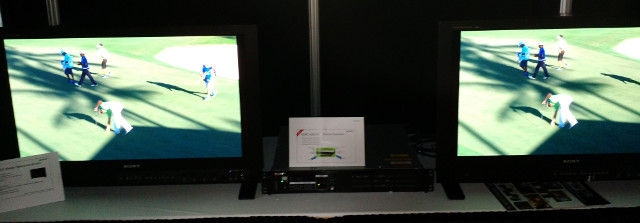
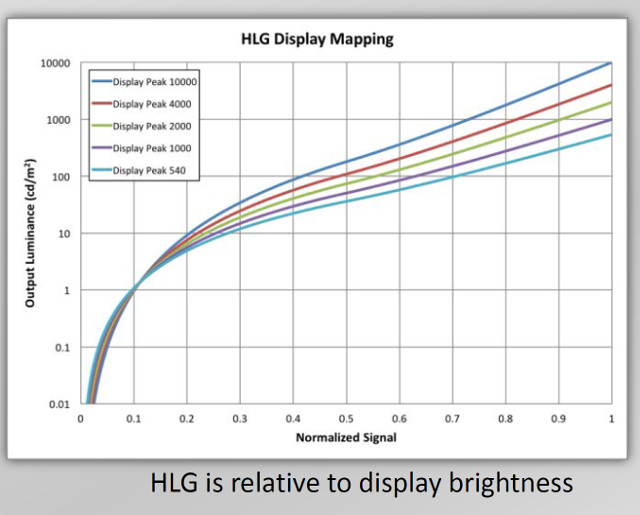
ITU-BT.2100 provides a means to convert between HLG and PQ and Mandle also shed light on how HLG can use the input from an ambient light sensor in the display to adjust the EOTF, as included in BT.2100. This standard also introduces the use of ICtCp color encoding as an alternative to YCbCr for color remapping from one color gamut to another. ICtCp is a constant luminance format and is intended to preserve the hue of the colors better than YCbCr in these conversions.
For live production, there remains much debate about the use of PQ, HLG and camera-specific OETFs along with questions about the carriage of metadata. Mandle noted that Dolby has a unit called the CMU (Color Mapping Unit) that allows the production to be created in HDR with metadata that is passed to the CMU. This generates the SDR version of the program and can run in real time.
Sony offers the HDRC 4000 which can take in multiple flavors of HDR, SDR or camera gamma content and output in these same options. This facilitates multiple workflows depending upon how the user wants to configure the solution.
Hurst Describes Monitoring of HDR Signals
Norm Hurst is an expert at developing test patterns to monitor television signals. Over the last couple of years, he has been working to upgrade his patterns to support HDR, which he described in his talk.
His main test pattern is called the Sarnoff Visualizer, first developed around 2008 for SDR HD signals. He quickly found that applying a PQ-based HDR signal did not work as the Visualizer test pattern was implemented in code values. Applying a PQ signal created a display that was completely washed out, as PQ code values are tied to absolute luminance values and can go to 10K cd/m².
To develop an HDR version, Hurst found that he needed to define “diffuse white” for HDR, which is not defined in any standard today. He chose 100 cd/m² for this value, but in later discussions said that he thought this might be too low, but was open to input from others. The HDR version of the Sarnoff Visualizer is shown below.
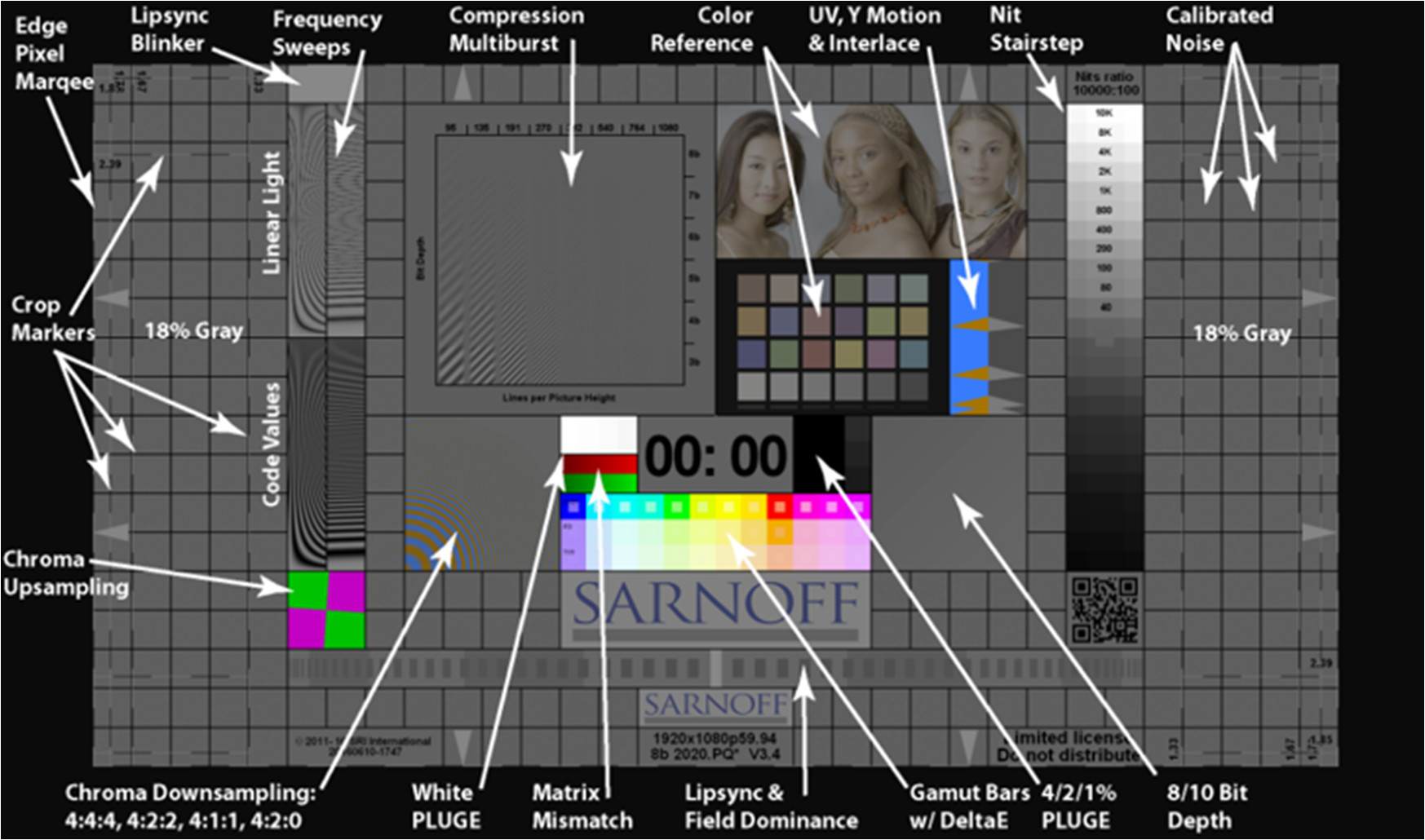
Hurst then provided a tour of this visualisation pattern. Highlights included a nits stairstep that now goes to 10K cd/m² and is useful to see where display clipping occurs. Color bars were replaced with gamut bars with a DeltaE insert. The 8/10 bit depth pattern is useful to see if your pipeline dropped from 10 to 8 bits along the way.
Flexible LEDs from DesignLED
Howard Witherspoon used his time to introduce his company’s flexible LED signage solution. Their solution does seem to be unique in that the LEDs are mated to a flexible rubber substrate. (Note:Barco has also shown flexible LEDs, as we reported on from Infocomm (R-series is Barco’s Thin, Light LED Solution)

In their target large signage market, structural and thermal issues can be major design challenges. Their solution seems to solve a lot of these issues.
He then described their product lines which include the:
-
AMFlex Series – 3,4 and 6mm pitch, 184mm concave diameter, 275mm convex diameter, 288 x 144mm modules
-
AmFlex Pro Series – 1.66, 1.9, 2.5mm pitch, 255mm concave diameter, 382mm convex diameter, 400 x 300mm modules
Both series reduce weight and heat by moving the power supplies off the display allowing them to be up to 10m away. Light output levels are offered at 800 or 2500 cd/m² with refresh rates of 1920 or 3000 Hz.
Witherspoon showed one of their structural frames at 12’x7’ (3.6m x 2.15m) which weighed only about 48 pounds (21.7kg). The modules attach by magnets making for very fast (less than 2 minutes) repair and replacement it it is needed.
Witherspoon then showed a number of installations with their LEDs. Some of these featured some very unusual shapes allowing design art with LEDs – an interesting sub-segment. They have even created 3D triangular modules, as shown below. – CC
